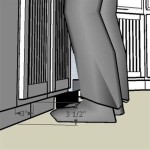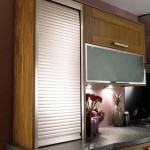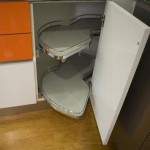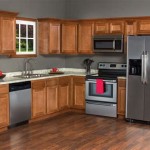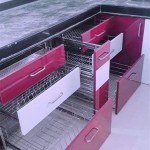What is the Labor Cost to Paint Kitchen Cabinets?
Painting kitchen cabinets can dramatically transform the look and feel of a kitchen without the expense and hassle of a full remodel. However, understanding the labor costs involved is crucial for budgeting and planning. Labor costs represent a significant portion of the total expense, influencing whether a homeowner chooses a DIY approach or hires professional painters.
The labor cost to paint kitchen cabinets is influenced by several factors, including the size and complexity of the job, the condition of the existing cabinets, the desired finish, and the painter's experience and location. This article provides a comprehensive overview of the factors affecting labor costs, typical price ranges, and ways to potentially manage or reduce these expenses.
Factors Influencing Labor Costs
Several key variables determine the labor cost of painting kitchen cabinets. These factors can significantly increase or decrease the final price, making it essential for homeowners to consider them when seeking estimates.
Size and Complexity: The number of cabinets and drawers directly impacts labor costs. A larger kitchen with more cabinets will naturally require more time and materials, increasing the overall expense. Additionally, the complexity of the cabinet design, such as intricate molding or raised panels, can add to the labor time. Cabinets with glass inserts or unusual shapes also demand more meticulous work, likely leading to higher labor charges.
Cabinet Condition: The existing condition of the cabinets plays a crucial role in determining labor costs. Cabinets that are heavily damaged, warped, or peeling require extensive preparation work. This may involve sanding, patching holes, repairing cracks, and applying multiple coats of primer. The more preparation required, the higher the labor cost will be. Cabinets with grease buildup or water damage also necessitate specialized cleaning and treatment, adding to the labor time.
Choice of Paint and Finish: The type of paint and finish desired can also influence labor costs. Certain paints, such as oil-based paints or specialty finishes like lacquer or high-gloss coatings, may be more difficult to apply and require specialized skills. These paints often demand more coats for proper coverage and a flawless finish, extending the labor time. Additionally, some finishes require specific application techniques, such as spraying instead of brushing, which can impact the overall cost.
Preparation Work Required: Thorough preparation is essential for a professional and long-lasting paint job. Prep work includes removing cabinet doors and hardware, cleaning the surfaces, sanding to create a smooth base, applying primer, and protecting the surrounding areas with drop cloths and masking tape. Labor costs reflect the time and effort invested in these preparatory steps. If the homeowner undertakes some of this preparation work themselves, such as removing the hardware and cleaning the cabinets, it may be possible to reduce the overall labor cost.
Painter's Experience and Location: The painter's experience level and geographical location also affect labor costs. Highly skilled and experienced painters typically charge higher rates due to their expertise and ability to deliver superior results. Similarly, labor costs can vary depending on the region, with urban areas often having higher rates than rural areas. It is advisable to obtain multiple quotes from different painters to compare prices and assess their experience and qualifications.
Whether Cabinets are Painted On-Site or Off-Site: Some painters offer the option of removing the cabinet doors and drawers and painting them off-site in their workshop. This approach can result in a smoother, more durable finish, as it allows for better control over the painting environment. However, off-site painting can increase labor costs due to the additional time and effort involved in transporting the cabinets. On-site painting, while potentially less expensive, might require more extensive masking and protection of the surrounding areas to prevent overspray.
Hardware Installation: While technically not painting, the re-installation of hardware (knobs, pulls, hinges) is frequently bundled with the painting labor. If the hardware is being replaced, the cost will depend on the complexity of the new hardware and the time it takes to install. If the existing hardware is being reused, expect a smaller charge for re-installation. If the homeowner is handling hardware installation, this can be removed from the overall labor estimate.
Typical Labor Cost Ranges
Estimating the exact labor cost to paint kitchen cabinets can be challenging, as it depends on the aforementioned factors. However, providing a general range can help homeowners get a better understanding of potential expenses. Note that these ranges are estimates and can vary based on local market conditions and the specifics of the project.
Low-End: On the lower end, for a small kitchen with basic cabinets in good condition, the labor cost might range from $800 to $1,500. This typically includes minimal preparation work and a single coat of paint.
Mid-Range: For a medium-sized kitchen with standard cabinets requiring moderate preparation, the labor cost could range from $1,500 to $3,000. This might involve some sanding, patching, and two coats of paint.
High-End: For a large kitchen with intricate cabinets needing extensive preparation and specialized finishes, the labor cost can exceed $3,000 and potentially reach $5,000 or more. This would likely include professional-grade paints, multiple coats, and meticulous attention to detail. This could also include off-site painting and specialized finishes.
These figures are for labor only and do not include the cost of materials, such as paint, primer, brushes, rollers, sandpaper, and masking tape. Material costs can add several hundred dollars to the overall project expense, depending on the quality and quantity of materials used.
It's crucial to get estimates from multiple contractors, detailing what is included in the labor cost. Some contractors will provide a single price that encompasses both labor and materials. Be sure to clarify what the estimate covers and what is excluded.
Pay attention to the contractor's reputation and reviews, as the cheapest option is not always the best. A higher-priced contractor may offer a superior quality finish and a longer-lasting paint job.
Ways to Manage or Reduce Labor Costs
While labor costs can be a significant expense, there are strategies homeowners can employ to potentially manage or reduce these expenses without compromising the quality of the finished product.
DIY Preparation: Homeowners can reduce labor costs by handling some of the preparation work themselves. This might include removing cabinet doors and hardware, thoroughly cleaning the cabinets, and lightly sanding the surfaces. However, it's important to be meticulous and follow proper techniques to ensure the cabinets are adequately prepared for painting. If the preparation is inadequate, it could negatively impact the final result and potentially increase the overall cost if the painter needs to correct the homeowner's work.
Choose Cost-Effective Paint and Finishes: Opting for more affordable paint and finish options can help reduce material costs, indirectly impacting the overall project expense. While it's tempting to choose the cheapest paint available, it's important to strike a balance between cost and quality. Lower-quality paints may require more coats to achieve proper coverage, potentially increasing labor time. Consult with the painter to explore cost-effective yet durable paint options that meet the homeowner's aesthetic preferences.
Obtain Multiple Quotes: Getting estimates from multiple painters is crucial for comparing prices and negotiating the best possible deal. It's advisable to obtain at least three quotes from different contractors, ensuring they provide detailed breakdowns of their labor costs and materials. When comparing quotes, consider not only the price but also the painter's experience, reputation, and warranty. A slightly higher quote from a more reputable painter might be worth the investment in the long run.
Consider On-Site Painting: If the painter offers both on-site and off-site painting options, consider on-site painting to potentially reduce labor costs. While off-site painting can offer a smoother finish, it typically involves higher labor charges due to transportation and handling. On-site painting, when done properly, can still provide a professional and durable finish at a lower cost. Be sure the painter is experienced with on-site spraying techniques and uses adequate ventilation and protection to minimize dust and overspray.
Negotiate a Fixed Price: When obtaining quotes, negotiate a fixed price for the entire project rather than an hourly rate. A fixed price provides more cost certainty and protects the homeowner from unexpected expenses if the project takes longer than anticipated. Be sure the fixed price includes all labor, materials, and preparation work. It is vital to get the agreement in writing, outlining the scope of work, materials to be used, and the payment schedule.
Stage the Kitchen Area: Before the painters arrive, clearing the kitchen area as much as possible will help to speed up the painting process and potentially reduce labor costs. Remove any appliances, dishes, or other items that might obstruct the painters' work. Cover countertops and floors with protective materials to prevent paint splatters. The less time the painters spend moving items and protecting surfaces, the lower the labor cost is likely to be.
Be Flexible with the Schedule: If possible, be flexible with the painting schedule. Painters may offer lower rates during their off-peak seasons or if they have gaps in their schedule. By being willing to accommodate the painter's availability, you may be able to negotiate a lower labor cost.
Hardware Considerations: Deciding whether to replace or reuse existing hardware can also impact the overall cost. Replacing hardware adds the cost of the new hardware itself, plus the labor to install it. If the existing hardware is functional and aesthetically pleasing, reusing it will save on both material and labor costs. If you are replacing the hardware and are comfortable doing so, handling this task yourself can further reduce labor costs.

How Much To Paint Kitchen Cabinets Professionally Diy Vs Hire A Pro

Fixr Com Cost To Paint Kitchen Cabinets Cabinet Painting

How Much Does It Cost To Paint Kitchen Cabinets

Costs To Paint Kitchen Cabinets Diy Vs Hiring Professional Painters

Cost To Paint Kitchen Cabinets 2024 Data Angi

How Much Does It Cost To Paint Kitchen Cabinets 136 Home

Average Cost To Paint Kitchen Cabinets 2024 Ariel S Home

How Much Does It Cost To Paint Kitchen Cabinets In Chism Brothers

Painting Kitchen Cabinet Cost 2024 Forbes Home

Cost To Paint Kitchen Cabinets 2024 Data Angi

